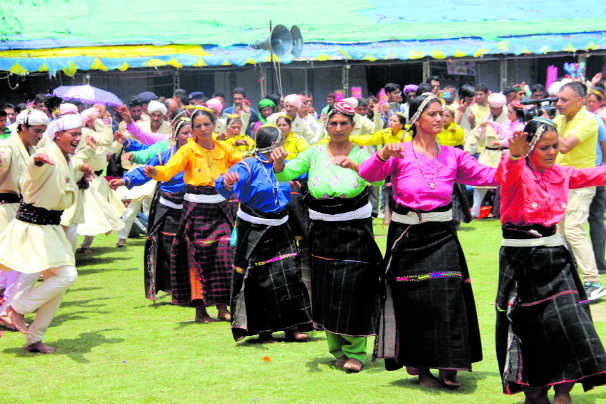Mild & mellow at Chamba’s Minjar
Festivals offer a unique moment to discover life’s myriad colours, and also travel within — the sights and sounds disappearing into a bewildering memory. In Himachal’s Chamba, end-July is when maize plants proudly peak in the hills; their broad green leaves canopying the soft corn within. Raindrops freshen up the cushy pads in the dance of a gentle breeze soughing across the vast fields. Decades — some say centuries — ago, a poor woman wanted to gift something to the Chamba king. She chose a maize flower. The king was so moved by the simplicity that he declared the day to be feted as maize day or Minjar day. Hence the festival.
There are other stories, but hardly any, post-Partition. And today the 400-year-old Minjar festival is more of a trade fair. The district administration sold rights to set up shopping kiosks in the week-long fair for about Rs 90 lakh. The fair, local residents rue, hardly reflects the culture or heritage of former Chamba state.
Minjar is generally celebrated for a week starting from the last Sunday of July to first Sunday of August. This year it is being celebrated from the third Sunday of July to the last Sunday of the month.
Vijay Kumar Sharma, a senior artist with Chamba museum and a Padma Shri recipient, says the Minjar fair, held at the historic Chowgan ground, is meant more for traders from neighbouring states. “No shop in the fair that sells anything that promotes art and craft of Chamba,” says Sharma. During the days of the royals, Minjar was celebrated for only three days. Commercial factors led to its extension to one week. The administration now wants it to be a fortnight fair, he said.
In the incompleteness, there are shades of Minjar’s existential contents. Traditional singers come and sing Kunjari Malhar in the evenings. Heritage lovers link Kunjari to Kunja birds (great egrets) which fly over the Chowgan ground in evenings during monsoon. And Malhar, obviously, refers to the raga for monsoon.
Local entrepreneur Pankaj Chowfla has keen interest in preserving and documenting the heritage of the erstwhile Chamba state. He says before the Partition, the Abdal community of Muslim singers sang Kunjari Malhar. Post-Partition they moved to Pakistan and settled in Rawalpindi. The disciples who played music for the Abdals stayed put, and now carry the tradition forward. All these artists come from Bharya village, near Chamba.
Chowfla says Punjabi or bollywood pop have largely replaced the traditional culture. “The administration should invite artistes from other parts of Himachal to promote the hill culture,” he said. That’s urgently required because youngsters, though, participate in the Minjar fair, they are hardly aware about its heritage and history. Like, Mohinder Thakur (24). He says he loves to enjoy the festival, but doesn’t quite know the heritage part of it. For Yogesh (20), the fair is a seasonal celebration, and youngsters like him should be involved more in the shaping of the fair.
Sweet corn fest
- In ‘History and Culture of Himalayan States’, authored by Prof Sukhdev Singh Charak of Jammu University, Minjar festivities started in 1641
- That year Raja Prithvi Singh returned to Chamba after his victory over Jagat Singh of Nurpur. The people greeted the winner with ‘minjar’ (the thin growth on maize crop) wrapped in a red thread. Thus Minjar festival was born
- After the fair lost royal patronage post-Partition, Raghubirji, the family deity of former rulers of Chamba, was made the supreme godhead
- Most of traditional palanquins in which the royals arrived are lost









